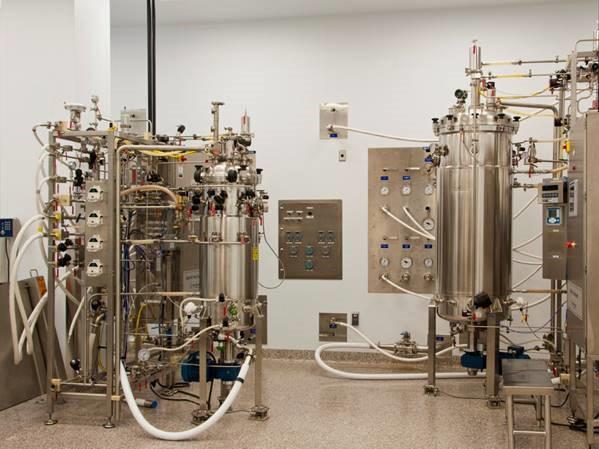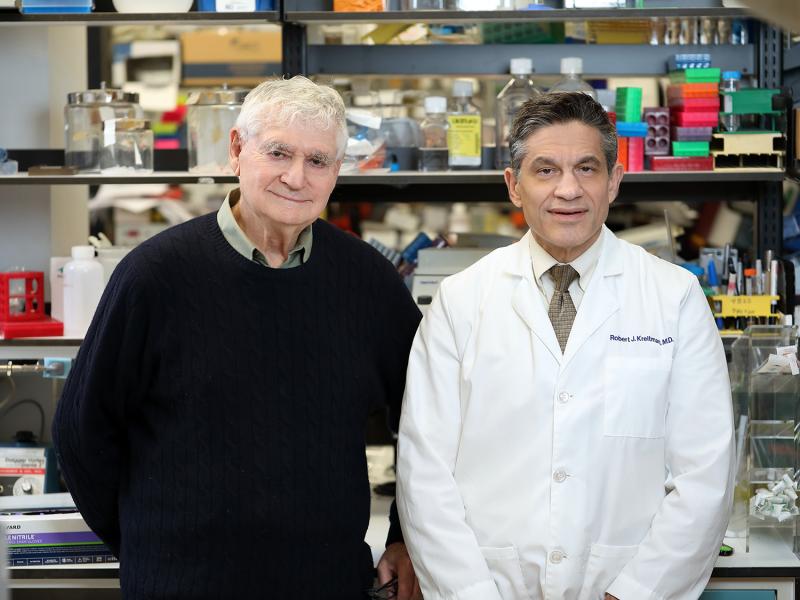Ira Pastan, Ph.D., says the FDA’s recent approval of moxetumomab pasudotox, a drug that originated in his lab, wasn’t like “hitting a home run with the bases loaded, all of it happening in 20 seconds.”
In fact, it was more like 20 years.
Pastan, an NIH Distinguished Investigator, is the co-chief of the Laboratory of Molecular Biology and head of the Molecular Biology Section for NCI’s Center for Cancer Research. After decades of research, manufacturing, and clinical trials, he says it’s “obviously great” to see his idea translate from basic science to FDA approval.
Moxetumomab pasudotox (Moxe), now marketed as Lumoxiti, could prove to be a life-changing treatment for patients with Hairy Cell Leukemia (HCL) who have been failed by standard therapy. HCL is a rare blood cancer that causes the bone marrow to produce excess B cells, which eventually crowd out healthy red and white blood cells and cause infections, bleeding, and anemia. Approximately 1,200 new cases are reported each year in the United States, accounting for just 2% of all leukemias.
What’s more, Pastan’s discovery is a testament to the unique relationship between the National Cancer Institute and the Frederick National Laboratory (FNL). Historically, few companies research cures for such a rare disease, let alone produce them at scale. It’s no wonder, then, that FNL’s president, Ethan Dmitrovsky, often asks, “If not us, then who?”
Clinical Trial Leads to Exciting Results
Pastan began researching immunotoxins over two decades ago. The first construct that his lab explored, called LMB2, targeted T-cell malignancies and showed some efficacy, but the toxin had worrisome side effects.
“It was Dr. Pastan’s LMB2 construct that led the way and was the proof of concept proving that immunotoxins actually could work in a clinical setting,” said FNL’s Trevor Broadt, QC Director, Biopharmaceutical Development Program (BDP).
Pastan then turned to a construct called BL22 that targeted B-cell malignancies, which are much more common than T-cell malignancies. It entered clinical trials and was successful, though it too had some undesirable side effects. A higher-affinity version, HA22, was then created with a re-engineered antibody that bound more tightly to its target and decreased undesirable side effects.
In May 2012, Pastan and his colleagues published a paper in Journal of Clinical Oncology, with NCI’s Dr. Robert J. Kreitman as the lead author, detailing the results of the Phase I clinical trial of HA22, which Kreitman had led.
The trial, which only sought to establish a recommended dosage, showed surprisingly positive results.
“I would say one of the more exciting moments was early on, when Bob [Kreitman] treated one of the first patients with HCL. He called me two days after the first dose and said, ‘Ira, the leukemia count has fallen by 50% and it’s still going down.’ So, we knew it was working.”
Of the 28 patients enrolled, 13 achieved complete remission, an unusually good result for a Phase I trial. Of those 13 patients, 12 had complete remission lasting longer than one year. Though drug-related toxicities were observed in some patients, no dose-limiting toxicity was found—a good indication that the antibody was properly directing the toxin to the target.
“A Rather Involved Manufacturing Process”
Moxetumomab is a recombinant immunotoxin—a combination of pseudomonas exotoxin A with a unique monoclonal antibody that binds to a specific substance (in this case, CD22) to directly target cells. Most monoclonal antibodies are produced in mammalian cells, but the compounds on which Pastan was working, which are toxic to mammalian cells by nature, had to be grown in bacterial cells, instead—specifically, E. coli.
When the time came to produce the drug at scale, Pastan’s group turned to NCI’s Toby Hecht, Ph.D., and FNL’s Steve Giardina, Ph.D. at what was formerly called the Monoclonal Antibody and Recombinant Protein Facility in Frederick, Md., and is now the BDP.
Giardina even visited Pastan in Bethesda and spent a week with Kreitman around a cold box learning how to make recombinant immunotoxin before bringing the method back to Frederick.
“It’s a rather involved manufacturing process and it required a lot of development effort on BDP’s part to figure out how to actually make those cell banks, figure out how to correctly refold the proteins and obtain active product,” said Broadt. “That’s what our development efforts were for, figuring out how to manufacture a monoclonal antibody from E. coli and how to translate the discovery into an actual working product suitable for clinical use.”
In addition to manufacturing the drug, BDP did stability testing and helped transfer the production process and the testing methods to Cambridge Antibody Technology when it acquired the license for Moxe.
“We worked very closely and had strong support from [BDP],” Pastan added, “and they also helped with testing the drug to be sure it was stable as we were using it until it was transferred to industry.”
After Cambridge Antibody Technology purchased the license for Moxe, the company was acquired by Medimmune, which sponsored the Phase III clinical trial. That trial was successful, and, in late 2018, Moxe received FDA approval.
“We’re always happy when we see some of our products get licensed,” Broadt said. “We’re happy that these things get out there, they’re working, and they’re changing people’s lives for the better.”
Added Pastan, “It required internal support—my previous boss, Al Rabson, was a great supporter of ours and for the program initially—and without the people at Frederick who made the drug for us, so we could do clinical trials, it wouldn’t have happened.”




